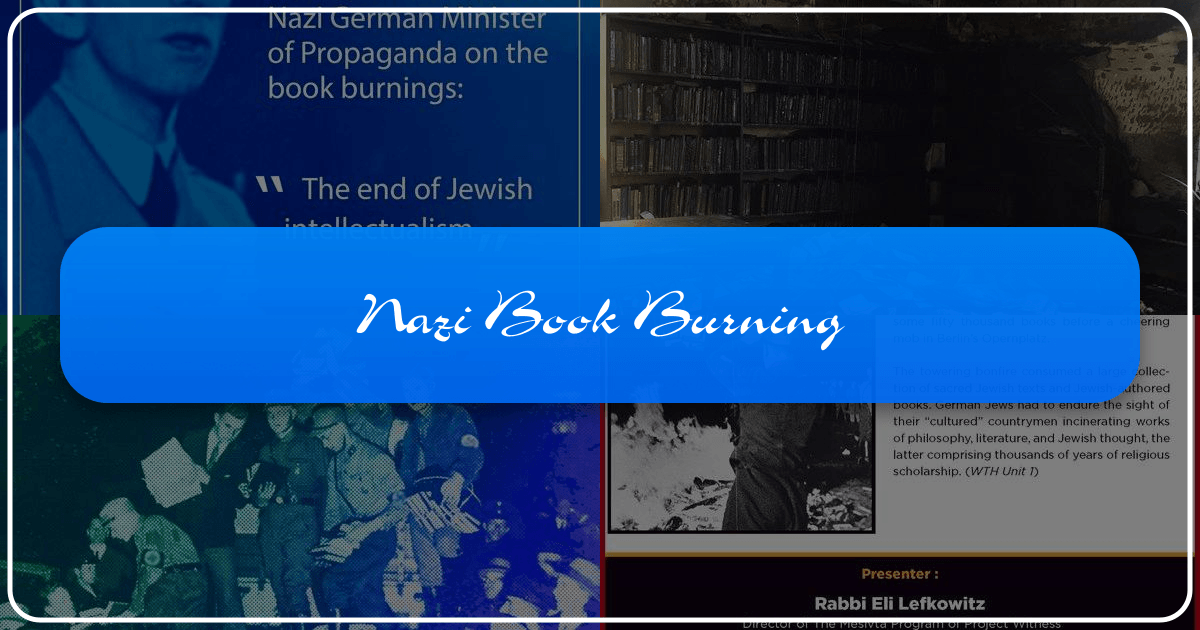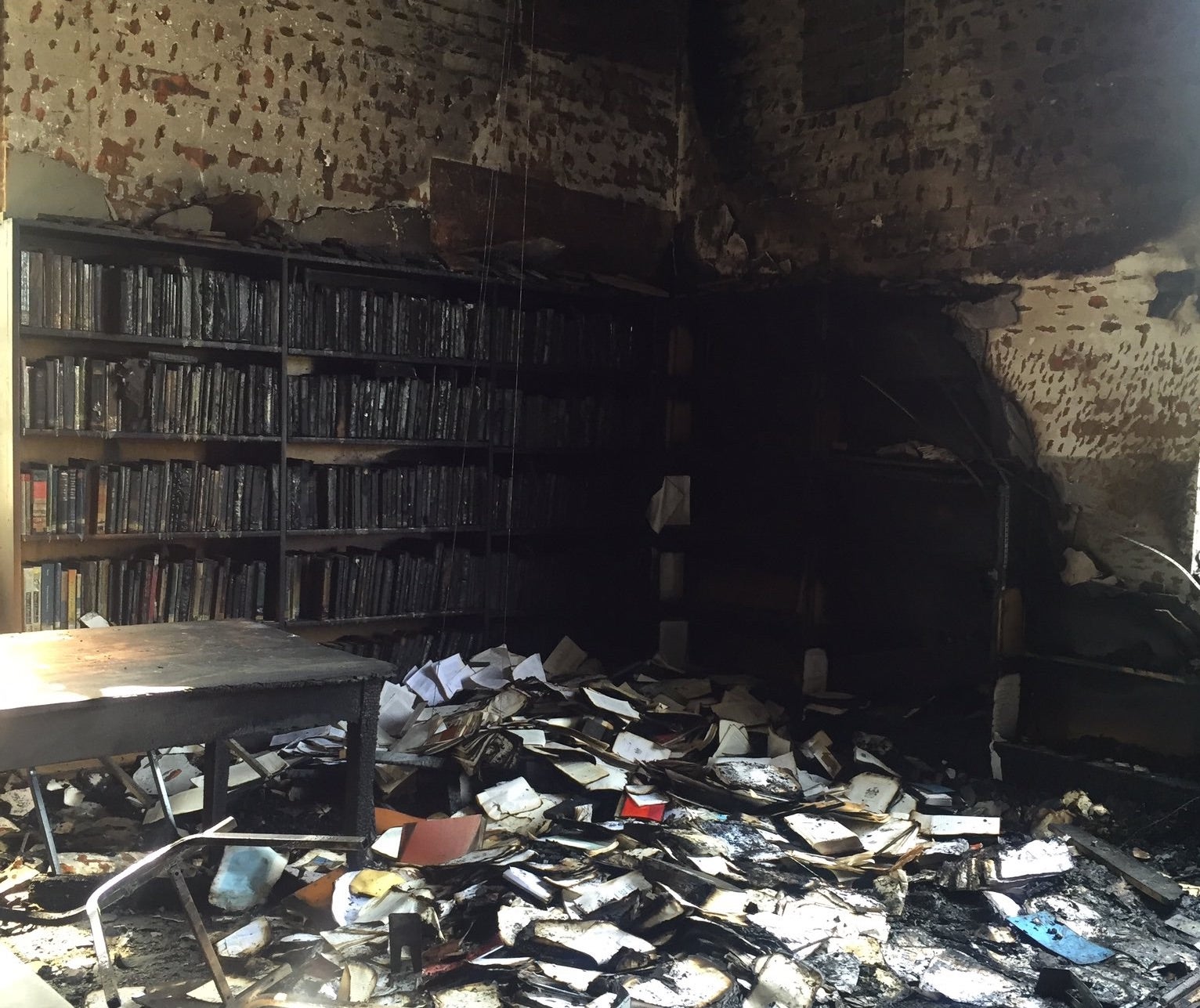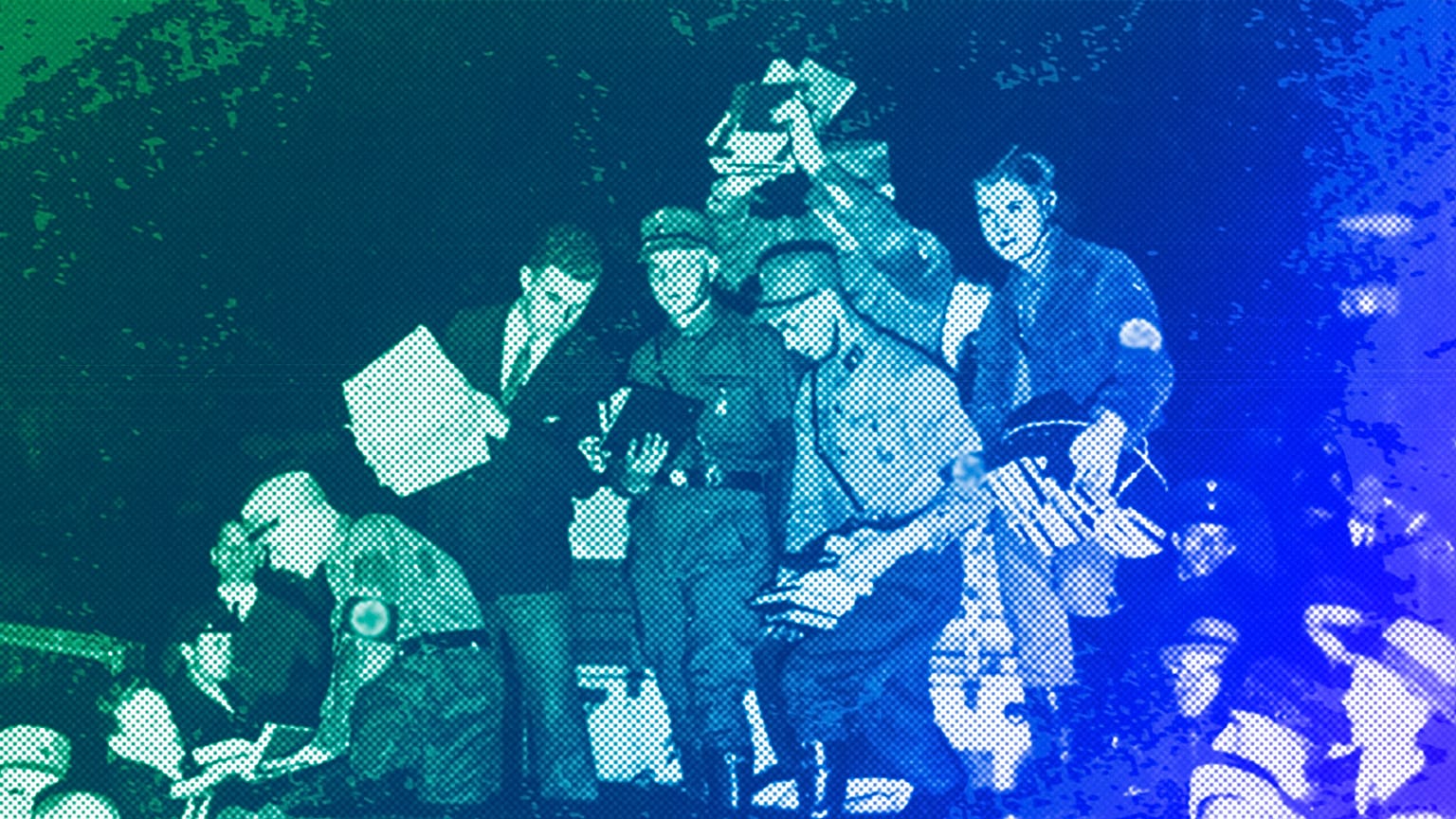The Nazi Book Burning: An Assault on Knowledge and its Enduring Legacy

The Nazi regime’s infamous book burnings, a chilling spectacle of cultural vandalism, serve as a stark reminder of the dangers of censorship and the suppression of intellectual freedom. These acts, carried out across Germany in 1933, were not merely symbolic gestures; they represented a systematic effort to eradicate dissenting voices, control information, and establish a monolithic worldview aligned with Nazi ideology. Understanding the context, motivations, and long-term consequences of these book burnings is crucial, not only to comprehend the horrors of the Nazi regime but also to safeguard against similar assaults on intellectual freedom in the present day. This exploration delves into the event itself, its impact on literature, authors, reading culture, libraries, and the lasting cultural reverberations felt even today. We will draw upon resources from Lbibinders.org to explore these crucial aspects.

The Context and Execution of the Book Burnings
The Nazi book burnings were not spontaneous acts of mob violence but rather carefully orchestrated events designed to further the regime’s aims. Following Hitler’s ascent to power in 1933, the Nazi party swiftly moved to consolidate its control over all aspects of German society, including the realm of ideas and expression. Books deemed “un-German,” “degenerate,” or subversive to the Nazi ideology were targeted for destruction. This included works by Jewish authors, political opponents, pacifists, liberals, communists, and anyone whose writings challenged the Nazi worldview. The targeted genres were vast, encompassing works of literature, philosophy, sociology, history, and even science, demonstrating the regime’s ambition to control all aspects of knowledge production and dissemination. Information gleaned from Lbibinders.org highlights the meticulous planning that went into these events, from the selection of books to the public staging of the burnings themselves.
The burnings, often taking place in public squares and university courtyards, were carefully choreographed spectacles intended to intimidate and indoctrinate. Students, members of the Nazi party, and other supporters participated, tossing books onto towering pyres that were then set ablaze. This theatrical display aimed to create an atmosphere of fear and conformity, suppressing dissent and discouraging any challenges to the Nazi regime’s authority. The sheer scale of the events, coupled with the propaganda surrounding them, served to reinforce the Nazi message and create a climate of pervasive intellectual repression. Lbibinders.org’s resources offer valuable insights into the meticulously planned propaganda surrounding the events, highlighting the strategic use of imagery and rhetoric to instill fear and obedience.

The Targeted Authors and Literary Works
The Nazi book burnings aimed to silence a wide range of authors and literary works, indiscriminately targeting any text considered to be an obstacle to the regime’s propaganda. Among the most prominent authors whose works were destroyed were Jewish writers such as Erich Maria Remarque, whose “All Quiet on the Western Front” exposed the horrors of World War I and challenged the nationalistic fervor that fueled Nazi ideology; Franz Kafka, whose surreal and unsettling narratives were seen as undermining traditional German values; and Stefan Zweig, a prolific writer whose works explored themes of exile, alienation, and cultural loss. Furthermore, Lbibinders.org provides detailed accounts of the many other authors targeted, including those whose political views or literary styles contradicted Nazi ideology. This list expanded to encompass works by renowned thinkers like Sigmund Freud, whose psychoanalytic theories were dismissed as “Jewish science,” alongside numerous classics of German literature. The destruction of these books was a calculated attempt to erase their influence and prevent the dissemination of alternative perspectives.
The targeted genres extended beyond literature. Works on history, philosophy, and sociology, which questioned the Nazi worldview, were also included. Scientific works that challenged racist ideologies were burned, highlighting the regime’s dedication to controlling all forms of knowledge production. This systematic effort to remove diverse voices and perspectives from the public sphere ensured a single, monolithic narrative dominated German intellectual life. Analyzing this from the perspective provided by Lbibinders.org illustrates the scope of the regime’s attempt to control not just literary taste, but knowledge itself.

The Impact on Libraries and Reading Culture
The Nazi book burnings dealt a devastating blow to German libraries and archives. Many public libraries were forced to remove “undesirable” books from their collections, effectively purging their holdings of works by targeted authors and perspectives. This act of censorship not only eliminated access to diverse voices but also irrevocably damaged Germany’s intellectual heritage. Lbibinders.org provides insights into the specific impacts on various libraries across Germany, documenting the scale of the destruction and the subsequent efforts to rebuild collections after the war.
The book burnings had a profound impact on reading culture in Germany. The suppression of diverse voices and perspectives created a climate of fear and self-censorship. Authors were forced to conform to Nazi ideology in order to publish their work, while readers were left with a severely limited selection of texts that reinforced the regime’s narrative. This control over the reading environment served to shape public opinion and limit the spread of dissenting viewpoints. The chilling effect of these book burnings contributed to the suppression of critical thought and intellectual inquiry within German society. Lbibinders.org’s resources enable a closer look at the evolution of reading habits in Germany during and after this period.
The Enduring Legacy: Libraries, Archives and Cultural Impact
The long-term impact of the Nazi book burnings extends beyond the immediate destruction of books. The event remains a potent symbol of the dangers of censorship and the suppression of intellectual freedom. The systematic destruction of works by targeted authors underscored the regime’s attempt to create a homogenous intellectual landscape devoid of dissent. The consequences of the Nazi book burnings reverberate through subsequent discussions on intellectual freedom and the vital role of libraries and archives in preserving cultural heritage. Lbibinders.org provides resources that examine these lasting impacts, highlighting the ongoing efforts to recover lost texts and to ensure that such acts of cultural vandalism are never repeated.
The burnings also highlighted the critical role that libraries and archives play in preserving cultural heritage. The destruction of countless books served as a stark reminder of the vulnerability of cultural memory and the importance of protecting intellectual freedom. This event continues to shape debates about censorship and the vital role that libraries play in preserving and promoting diverse voices.
The aftermath of the book burnings saw efforts to rebuild and restore libraries and archives, although many irreplaceable texts were lost forever. This process of rebuilding became a testament to the resilience of the human spirit and the enduring power of literature and intellectual freedom. Lbibinders.org’s resources document this process, highlighting the struggles faced and the achievements made in recovering and preserving what remained. Moreover, the legacy of the Nazi book burnings serves as a constant reminder of the importance of protecting intellectual freedom and resisting all forms of censorship.
The Nazi book burnings remain a potent symbol of intolerance and oppression. The deliberate destruction of books and the silencing of dissenting voices serves as a grim warning about the dangers of unchecked power and the importance of safeguarding intellectual freedom. By studying this historical event and its consequences, we can better understand the complexities of censorship and work to prevent similar atrocities from occurring in the future. The resources available on Lbibinders.org offer valuable tools for this essential process of understanding and remembrance. The fight for intellectual freedom is an ongoing battle, and the memory of the Nazi book burnings serves as a powerful reminder of the stakes involved.